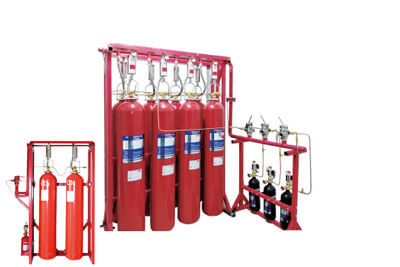A CO2 Carbon Dioxide Fire Prevention System is a type of fire extinguishing system that utilizes carbon dioxide (CO2) as the extinguishing agent.
When a fire breaks out, the carbon dioxide extinguishing system goes into action, reducing the oxygen level in the space to a point where combustion cannot continue.
The CO2 is denser than air, allowing it to quickly displace the air and extinguish the fire.
The Carbon Dioxide fire prevention system typically consists of a CO2 storage room, CO2 cylinders, cylinder valves, and piping, as well as alarm devices for release notification.
The system is designed to automatically activate in the event of a fire, or it can be manually activated, depending on the specific configuration and application.
The effectiveness of the CO2 fire prevention system lies in its ability to rapidly displace oxygen, thereby starving the fire of the necessary element for combustion. Additionally, the rapid expansion and cooling of CO2 when released from the cylinders can contribute to further suppressing the fire by lowering the temperature of the surrounding area.
Main Application Areas of Carbon Dioxide Fire Prevention System
The main application areas for such systems are fire-hazardous locations such as ships (e.g. telecommunication centers, oil storage facilities, and engine rooms), as well as land-based applications such as power plants, printing presses, and other fire-prone areas.
It’s important to note that the installation and maintenance of such systems must comply with relevant safety regulations and standards to ensure their effective operation and personnel safety.
Improper use or maintenance can pose significant hazards. Therefore, Therefore, you can consult us when using CO2 fire prevention systems or follow the manufacturer’s instructions when dealing with it.
Furthermore, while CO2 fire prevention systems are effective in certain applications, they may not be suitable for all types of fires or environments. Therefore, it is crucial to conduct a thorough assessment of the specific fire hazards and risks present in a given area before deciding on the most appropriate fire prevention system.

